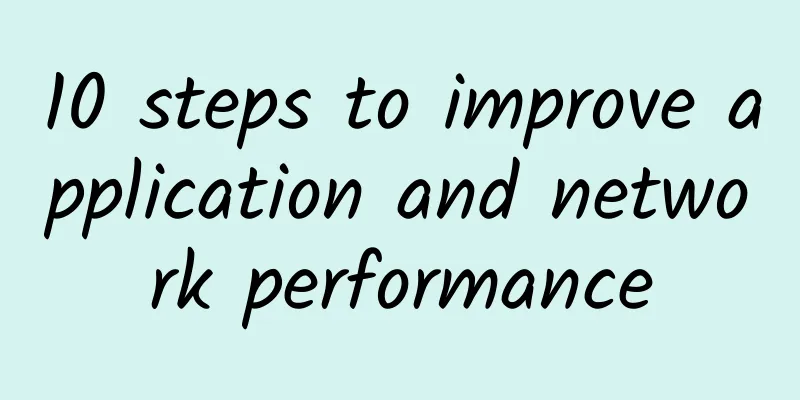10 steps to improve application and network performance

|
If you work in a network operations team, you know that it is becoming increasingly difficult to understand and ensure application performance for end users. You need visibility into areas where problems may occur – end-user devices, networks, code, and infrastructure – to quickly identify and diagnose issues and minimize downtime. However, this level of visibility isn’t easy to achieve without deploying additional packet capture devices or remote site technicians. Blind spots are everywhere, making it difficult to focus on monitoring your most important applications. When nearly 50% of network traffic is web-based and all networks look the same, it’s harder than ever to identify your critical applications and stay ahead of performance. This can mean inefficient troubleshooting, longer resolution times, and an overall lack of application intelligence. Who wants to face this situation?
1. Find the root cause of the problem Voice, video, and social media traffic can slow down your network. But with performance metrics tools for every application, location, and user, you can identify the source of any problems, from layer 7 application information all the way down to low-level addresses and ports, in just a few clicks. 2. Eliminate potential problems before they occur Your solution should be able to proactively monitor and alert on meaningful performance changes so that you can avoid potential problems. The dilemma is, if you fix a problem before it happens and no one notices it and no one reports it to support, is it really a problem? 3. Reduce brownouts and downtime When your critical network connection or business application fails, every minute counts. IDC found that users of Riverbed SteelCentral network performance management software experienced 34% fewer downtime incidents per month and reduced average incident duration by 51%. This can significantly improve end-user productivity. 4. Get proactive alerting and root cause identification With full visibility into your network and proactive, real-time alerts on issues, you can deliver security and performance to your organization. Riverbed SteelCentral can detect threats or intrusions in your network, helping you comply with regulatory requirements and IT directives. This means fewer resources are consumed, and users and the bottom line are not impacted. 5. Mapping Transactions A transaction map illustrates all the components used to complete a specific transaction and is a basic template for more effective problem solving and impact analysis. Because it reduces the sample of information to be analyzed, transaction maps are the cornerstone of a comprehensive monitoring strategy. 6. Integrate your tools Manually aggregating data from multiple sources into a single business service view is a resource-intensive and time-consuming activity. A good network monitoring solution should reduce the number of tools you use to troubleshoot your network and should reduce the number of "dashboards" you have to look at to get the right network data. 7. Understand the dynamic environment of each business service You should understand how services are delivered in your dynamic infrastructure. Modeling business services and mapping the components used to deliver them to end users is fundamental to accurate analysis of performance issues. 8. Simplify management Your toolset should have broad domain monitoring capabilities that can be abstracted away to focus on services (e.g., CRM applications). This way, it can model the dependencies of business services on the underlying infrastructure used to deliver each application. In turn, you can gain better collaboration between global teams, improve resource prioritization, and simplify troubleshooting. 9. Collaborate with application support and development teams Keep everyone on the same page with a comprehensive service dashboard. From the CIO and IT management to application managers to security and network teams, everyone with access to the same data can see a unified picture of the network and the applications and services on it. This means less finger pointing and faster problem resolution. A common, integrated view of all component data is a key feature of a management solution. 10. Plan for the future The more you understand what’s happening on your network today, the better you can plan for future needs and network expansion. In addition, you can more confidently align your network and IT resources with business priorities. Planning new service deployments, addressing new cloud and mobile applications, and data center consolidation projects will be easier and less risky. Figure 1 SteelCentral dashboards include everything you need to know, from the highest level to the most detailed, so you can drill down to root cause and isolate issues with a single click. This chart illustrates deep application visibility, allowing you to identify your most traffic-intensive applications on a minute-by-minute basis. |
<<: 5 things you should know about monitoring tools
>>: Managing the Digital Experience with Riverbed SteelCentral
Recommend
AT&T is offering six months of Stadia Pro for free to 5G and fiber customers
Carriers are expanding their growing list of free...
How to change ssh port in CentOS7.*
I checked the port modification records in the si...
DogYun National Day Promotion: 30% off on Dynamic Cloud, 20% off on Classic Cloud, 100 yuan/month discount on Dedicated Server, 100 yuan free for every 100 yuan you top up
DogYun is a Chinese hosting company established i...
An overall introduction to the 5G protocol, worth collecting!
The technical specifications related to 5G NR are...
China has opened nearly one million 5G base stations, and China Mobile is almost caught up
According to the latest data, the three major ope...
Threat attacks targeting home routers increased fivefold
In the first quarter of 2018, the number of cyber...
RabbitMQ communication model publish-subscribe model
Hello everyone, I am Zhibeijun. Today, I will lea...
How to cut data center costs without sacrificing performance?
While organizations are placing greater demands o...
Exploration of the application of computing network metropolitan area RDMA in home broadband network
1. Dilemma of Traditional TCP/IP Network Transmis...
Analysis: Which businesses need a dedicated wireless network?
Over the past few years, private wireless network...
What is edge computing and how will it impact businesses?
The process of transferring data remotely involve...
Contabo: $6.99/month KVM-8GB/200G SSD/200M unlimited traffic/Germany, the United States, and Singapore data centers
Contabo is a long-established German hosting comp...
IMIDC Hong Kong/Taiwan Server E3 Series $90 off per month starting at $39/month
IMIDC is a local operator in Hong Kong. It has br...
5G construction has not yet been completed, and countries have invested heavily in 6G research. Will my country still be ahead in 6G?
Whoever masters advanced network technology first...









